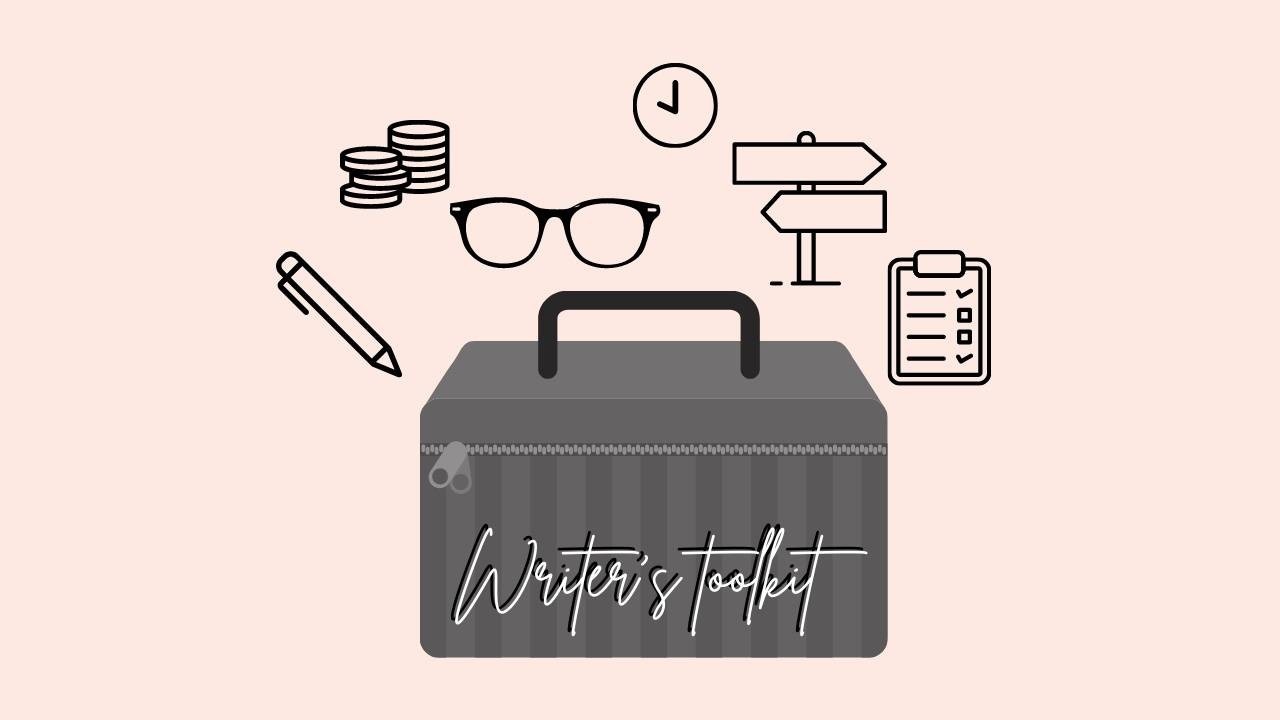Six types of tools you need in your writer's toolkit
May 26, 2021
What is a writer's toolkit and what would you put in it? If you want to share your written words with a reader you'd also need some tools in that kit to help with the business of publishing. Tools that help you both write and publish. Those two threads - the art and the business of writing - seem at times to compete, contrast and conflict with each other.
But if our writing is to be read we need to both do the work and serve a reader. There is an age-old conflict between art and business and some deny that it is even possible to combine the two. Business would sully the art or writing with marketing and money. But what if we reframe business as an art in itself, one that can be both beautiful and useful? I want to make beautiful things in my work and I want to feed my family! If there was a writer's toolkit to navigate this world of writing and publishing, what would you put in it? I've come up with six types of tools I need in my writer's toolkit.
I've included some affiliate links for tools that I recommend below, just click the image to purchase.
 1. Craft tools for writing
1. Craft tools for writing
Pens, notebook, laptop and something to help craft those words into something beautiful and/or useful would be the very basics! Then I need tools to help overcome the inevitable writer's block! Other tools that help with the craft of writing might be a dictionary, a thesaurus, the fuel of coffee, or even a view out a window. A structure or plan to organise a writing piece so that it reads well.
These are some of my daily craft tools for writing available on Amazon:

Uniball rollerball pens
I use these all the time, the Moleskine plain notebooks in large size. I use the card cover ones that come in a set of three and then use one per topic or class that I am working on. The paper is great for writing on and I like plain pages because I don't have to write between lines!
Macbook Pro. Other laptops are available but I'm a mac girl. It comes from being a designer first when the design software just ran better on Macs. They are workhorses and I will always recommend them.
 2. Monetising tools for writing
2. Monetising tools for writing
As with any art or craft it takes time and investment to improve and train. Tools that help reimburse that expense and effort would be useful in a writer's toolkit. That might be a client, a product or service I can offer. Then some type of accounting system, invoices, spreadsheets and calculators that deal with the numbers not the letters!
Places to find freelance writing work include Upwork.
 3. Search tools to find a reader
3. Search tools to find a reader
I don't just write for myself or my family, I want someone to read my words and find them useful or beneficial to them in some way. Search tools that help me find these readers such as a website, SEO, keywords and marketing tools that connect my writing with a reader who needs them, would be in my kit.
On a Wordpress blog website I would recommend the Yoast plugin for help with SEO.
 4. Timing Tools to keep writing
4. Timing Tools to keep writing
I need my planner and diary tools to schedule time for writing. A process to keep me writing or overcoming writers block. The writing doesn't stop, I need to keep those words flowing into the next post, email or book. Timing tools would be ones that give me time, keep me on track and writing.
The iola planner and journal will help you plan and start noticing your days is a gentle way to start with a regular practice of writing.
This year I have been using the go girl planner for planning out my work monthly and weekly. It is useful for setting goals too.
 5. Signage tools to your writing
5. Signage tools to your writing
I need tools to tell my readers that I've written, some arrows that point the way to the writing, writing that will, of course, benefit them in some fantastic way! How can I highlight or tell the story visually? Tools such as, images, graphics, colours, typography, and covers help highlight the way to, and through my writing.
I recommend Canva for a place to start designing your graphics. The templates are useful, the free version is all you need to start creating graphics for your blog, social media and a consistent visual identity.
 6. Checklist tools
6. Checklist tools
Once I've written a few times I start to measure what works for me and for readers. I can simplify my process, refine my work and check off the essential items needed for my next piece of writing work. Tools that help me do this are checklists, checklists for what I've included in the piece, a check for spelling or grammar errors, my SEO and keyword green light lists, questions I've ticked off, posts scheduled, emails sent.
These are the six types of tools I would put in a writers toolkit: craft tools, monetisation tools, search tools, timing tools, signage tools and checklist tools. What would you include?
The guys at Ultimate Bundles have the ultimate (get it!) Writer's Toolkit bundle. Find out more here:





